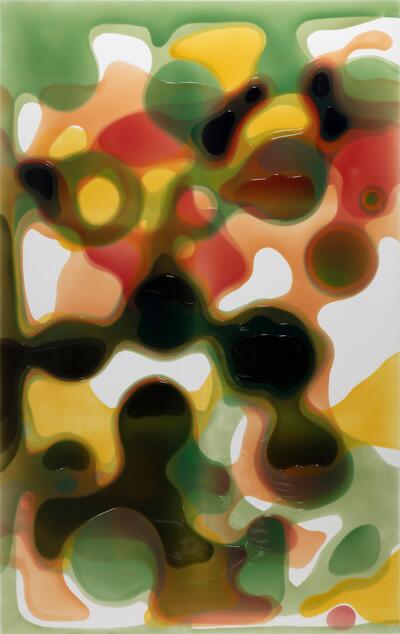Peter Zimmerman's Metapainting
The work of Peter Zimmerman is considered one of the most outstanding contributions to international pictorial abstraction
Throughout the history of art, there have been many great artists who have raised a vital question in artistic practice: How can art be transformed to reflect the new reality of our time? In this sense, Peter Zimmerman has become a paradigm of current art thanks to his revolutionary way of rethinking and conceiving the concept of painting.. From his beginnings, the German-born artist challenged traditional pictorial practice to imbue himself with the possibilities of combining digital art with painting on canvas . Behind this approach lies a deep reflection on the challenges facing current painting, addressing issues such as the relationship between the original and the copy, appearance and reality, content and form, or creation and its reception.
The works that, like “Trailer D”, have become the flagship of his artistic identity are the fruit of this profound reflection: the so-called meta-paintings . The origin of this new procedure, which came to light for the first time in 1998, curiously arises from a kind of error, when chance caused various digital files that he collected and combined following a simple nominal search system on the Internet to mix with each other, giving as a result, a work that the artist preferred not to modify (Remix, 1995). This “defective” image served to start a new method where the multiple and heterogeneous images that he compiled were subjected to digital manipulation until they reached their absolute distortion. Transformed beyond recognition and after being scanned and printed on transparency or acetate, they are projected on the canvas to later pour and superimpose the various layers of epoxy resin colored with pigments . This liquid resin that spreads on the white canvas transforms during the curing process until it solidifies, maintaining a brilliant appearance where the light seems to come from inside the painting, making its way through its multiple translucent layers. The result of this unusual procedure materializes in a work whose appearance is radically different from that of its origin, it explores visual rosettes of the surface and the material in synthetic and gelatinous textures of a psychedelic appearance that often resemble a microscopic examination in some way. of life or matter as yet unknown.
In this sense, the result of “spilling” the resin on the canvas through a game between chance and the artist’s self-control establishes a parallelism with the action painting of the expressionist painters and especially Jackson Pollock. However, Zimmerman’s conceptual concern is closer to On Kawara’s reflections on the ambiguity between painting’s desire to express what it really represents and its own acceptance of the limitations of this practice. Therefore, under these organic and amorphous forms that seem to have been formed on the canvas following an apparently random procedure, but perfectly studied, there is a lucid reflection around the contemporary fascination for a fragmentary and subjective multiple reality as elusive as our own sensations and perceptions in the face of the visual flashes that are the works of Zimmerman. This new way of conceiving painting also implies an aspect as relevant as the way we see it, questioning and causing uncertainty between the object and its representation . In other words, and as Magritte already expressed in his iconic work between what we think we see and what is really there.
Zimmerman manages to go beyond the coldness of technological and digital media with a work that captivates us, thanks to its powerful aesthetic presence and evocative character, where the depth and density of its materials and its visceral effects of light and color are capable of overwhelming anyone. he watches her






